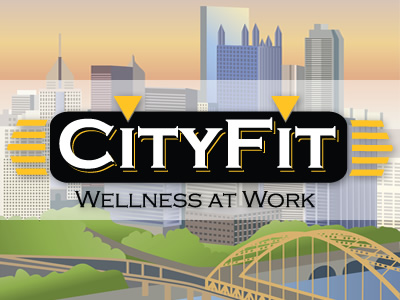Project Part II: Motivation
You are approached by Ryan Morrison, the mayor of a medium-sized city in the Midwest of the United States. He has heard that you know a lot about gamification and believes that gamification techniques can transform city government.
He would like to start with the health of city employees. The city has 50,000 employees and they happen to have exactly the same rates of obesity as the U.S. average: 34.4% overweight (but not obese) and 33.9% of them are obese. 53.1% of the city’s employees do not meet the U.S. Physical Activity Guidelines for aerobic physical activity and 76% of them fail to meet the Guidelines for muscle-strengthening activity. The city pays for health benefits for its employees and this cost is a huge part of the city budget. Economists in Mayor Morrison’s office have estimated that a 3% improvement in the average physical fitness of city employees would amount to a US$94 million reduction in annual city health costs; a 5% improvement would save US$188 million.
Describe in general terms a gamified system that could effectively motivate behavior change to address the challenge presented above. Specifically, explain how the system would effectively incorporate intrinsic motivation, extrinsic motivation, or both. Your answer should address the fact that this is an internal gamification project, targeted at the institutional goals of the city government. The system can use any technology (or no technology!), so long as the resources required seem justified by the scope of the opportunity.
Format: Maximum of 500 words. A normal answer will be 2-3 paragraphs of text, and/or a set of bullet points. Your submission should be self-contained (not requiring the grader to view any outside materials) and should provide sufficient details for the grader to understand the basis for your statements.
Please remember that you have agreed to the Coursera Honor Code as part of your enrollment for this course. Your submission must be your own work, and not copied from another student or an online resource such as Wikipedia. Graders will be instructed to assign a score of “0” to plagiarized work.
TO: Mayor Morrison
FROM: Vaneeesa Blaylock
RE: Gamified Marketing Approach to…
RE: Gamified approach to helping city employees lose weight and increase healthy activity.
Ours is a “good” problem to have. Not “good” in that 1/3 of city employees are overweight and over half are insufficiently active, but “good” in the sense that the vast majority of people understand that lower weight and more activity lead to a better and longer life. The vast majority of our employees already want to lose weight and want to be more active. We don’t need heavy handed motivators or “bribes” to motivate them for things they don’t want, rather we simply need to offer a little motivational assistance in achieving the goals many of them have held for a long time. In fact Mr. Mayor, because most of our employees will already have so much intrinsic motivation we need to be careful not to destroy or cloud that motivation with oversized or tangential rewards for achievements. We don’t need costly “big checks,” vacations, or other lottery-like rewards to motivate this activity. We should achieve better results by sticking to less grandiose, less costly rewards that more closely relate to the goals at hand. We can employ rewards like status-based onlline “badges” that signify to others that an employee is making progress toward their weight and activity goals.
A common weight-loss pitfall is huge, unrealistic goals of losing many pounds in a short time with draconian diet changes. These goals almost always fail. In games “new players” are never throw into the lions den like this, rather, they are given many small challenges that are individually within their ability to achieve, but cumulatively add up to real progress.
Another “good” part of our problem is that what’s good for the individual employee is also good for the city. We can achieve real health cost reduction as our employees achieve healthier, longer lives. It makes sense to have both individual goals that employees choose for themselves, as well as team goals that our many employee units can achieve together. Members of different city departments can support each other, thus achieveing both the specific health goals, as well as stronger team and community building in their unit. By letting the different city units compete with each other for overall goals each employee can earn a better life, status rewards, and contribute to their team’s success all with the same healthier diet and exercise practices that they already probably desired, but lacked the fine-grained motivational structure and team support to achieve. If we structure it right, the city will save money, employees will live happier, longer lives, and our city departments will be more harmonious and productive.
image: City of Pittsburgh
